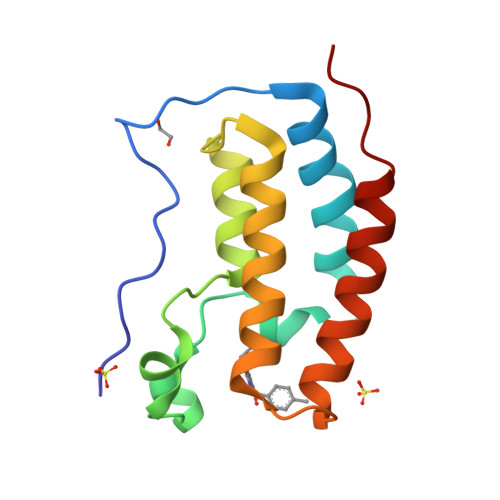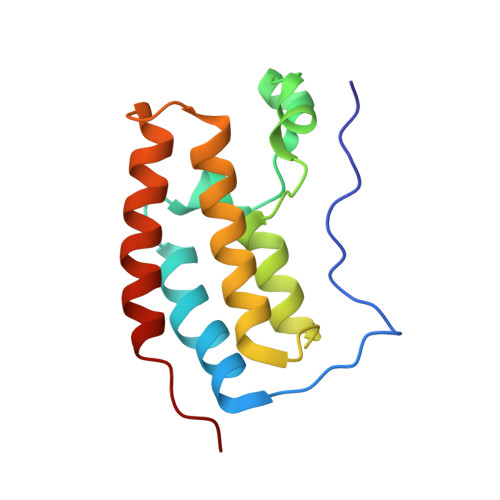BET Bromodomain Inhibitors with One-Step Synthesis Discovered from Virtual Screen.
Ayoub, A.M., Hawk, L.M.L., Herzig, R.J., Jiang, J., Wisniewski, A.J., Gee, C.T., Zhao, P., Zhu, J.Y., Berndt, N., Offei-Addo, N.K., Scott, T.G., Qi, J., Bradner, J.E., Ward, T.R., Schonbrunn, E., Georg, G.I., Pomerantz, W.C.K.(2017) J Med Chem 60: 4805-4817
- PubMed: 28535045
- DOI: https://doi.org/10.1021/acs.jmedchem.6b01336
- Primary Citation of Related Structures:
5KDH - PubMed Abstract:
Chemical inhibition of epigenetic regulatory proteins BrdT and Brd4 is emerging as a promising therapeutic strategy in contraception, cancer, and heart disease. We report an easily synthesized dihydropyridopyrimidine pan-BET inhibitor scaffold, which was uncovered via a virtual screen followed by testing in a fluorescence anisotropy assay. Dihydropyridopyimidine 3 was subjected to further characterization and is highly selective for the BET family of bromodomains. Structure-activity relationship data and ligand deconstruction highlight the importance of the substitution of the uracil moiety for potency and selectivity. Compound 3 was also cocrystallized with Brd4 for determining the ligand binding pose and rationalizing subsequent structure-activity data. An additional series of dihydropyridopyrimidines was synthesized to exploit the proximity of a channel near the ZA loop of Brd4, leading to compounds with submicromolar affinity and cellular target engagement. Given these findings, novel and easily synthesized inhibitors are being introduced to the growing field of bromodomain inhibitor development.
Organizational Affiliation:
Department of Chemistry, University of Minnesota , 207 Pleasant Street SE, Minneapolis, Minnesota 55455, United States.





















